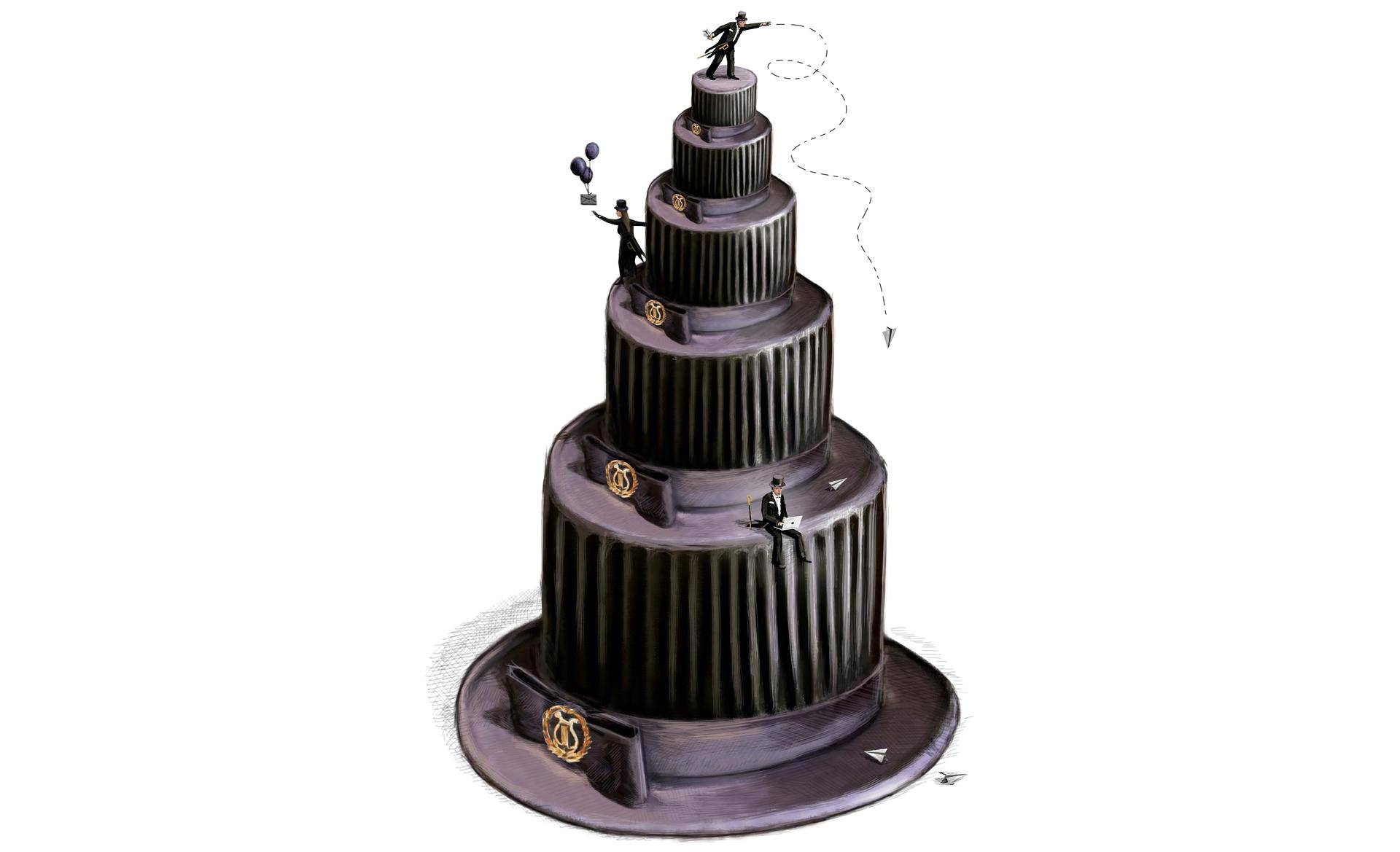Tällainen osui silmiin: Projektin tutkimusaihekaan ei ollut vaatimattomimmasta päästä: IHMISMIELI…
http://www.aka.fi/globalassets/32akatemiaohjelmat/mind/mind_programme_final-seminar-2017.pdf
”1 (3) Human Mind Research Programme
Final Seminar 1–2 December 2016
(Helsinki Congress Paasitorni, Paasivuorenkatu 5 A)
Thursday 1 December
09– Registration & coffee
10:00–10:10 Opening words: Gustav Djupsjöbacka, University of the Arts Helsinki
.
10:10–11:00 Keynote: Repositioning Pragmatics in the Context of Cognitive Linguistics and Interdisciplinary Research.
Milena Fuchs, Professor, Faculty of Philosophy, University of Zagreb
.
RK: Ämmä meinaa, että tämä on EU:n projekti, joka saa ilmeisimmin julkisen rahansa sieltä.
11:00–13:00 Project presentations I:
– Jari Hietanen, Eye Contact and the Meeting of Minds
.
RK: ”Rotumurhapeilineuroni-Jari” Tampereen yliopistosta, Psykologian laitokselta ja mm. YLE:n haistapaskantiedeohjelmista.
.
– Marja-Liisa Honkasalo, Mind and the Other
.
RK: ”Enkelitutkija” Turun ”yliopistosta”, entinen taistolainen 70-luvun alusta.
.
– Liisa Keltikangas-Järvinen, Intergenerational transmission of socio-emotional well-being: A multidisciplinary study of offspring development across the lifecourse
.
RK: Varsinainen arkkipölkkyharppu Helsingin ”yliopiston” Psykologian laitokselta…
– Kirsti Lonka, Mind the Gap between digital natives and educational practices (presentation by Katariina Salmela-Aro & Kimmo Alho)
.
Haistapaskantieteilijä, peilineuroonihörhö, Ylen puoskarodosentteja, opettanut myös lääketieteen opetettamisen psykologiaa joskus muinoin Karolinskassa, saanut varmaan potkut.
.
– Lauri Nummenmaa, Face To Face: Molecular and Functional Neural Mechanisms of Social Bonding and Interaction
Tampereen psykologianlaistoksen hölynpölläreitä.
.
– Anna Rotkirch, Linked lives over the life course: A dyadic approach to social development
.
Haistapaskantieteilijä, ”evoluutiofeministi”: tunnetaan mm. teriasta, että ”perhe ei ole geenistä, mutta sen sijaan vieraissakäyminen on geeneistä”…
.
13:00–14:00 Lunch (Paasiravintola)
14:00–15:40
Project presentations II:
– Jaakko Seikkula, Relational mind in events of change in multiactor therapeutic dialogues (presentation by Virpi-Liisa Kykyri)
– Martti Vainio, Cross-modal connections between speech communication, hand gestures and perception
– Matias & Satu Palva ja Juha Silvanto, Role of personality in awareness and memory of visual representations (HCCG)
– Antti Revonsuo & Harry Scheinin, The Conscious Mind: Integrating subjective phenomenology with objective measurements (CONSCIOUS MIND)
.
Arkkihaistapaskantieteilijä Aivokaapeli-Antti, totaalinen pölvästi.
.
– Pirita Seitamaa-Hakkarainen & Maarit Mäkelä, Handling mind: Embodiment, Creativity and Design (Handling mind)
15:40–16:00 Coffee break … ”
– Janne Seppänen & Göte Nyman & Kari-Jouko Räihä, Mind, picture, image (MIPI) (presention by Asko Lehmuskallio, Jukka Häkkinen & Poika Isokoski)
.
RK: Häkkinen täysin pöyristyttävä ”peilisolupsykiatri”, ollut myös NOKIAn puoskarinhommissa, YLE:n entisiä kestopölhäjä.
.
– Kimmo Katajala, Meanings of an Urban Space, Past and Present. Cross -cultural Studies of the Town of Vyborg from the 16th to the 21th Century
Jonathan Heron is Deputy Director of the Institute for Advanced Teaching and Learning (IATL) at the University of Warwick (UK), where he specializes in interdisciplinary practice. Previously, he was Research Associate at the CAPITAL Centre (with the Royal Shakespeare Compa- ny) where he won the 2010 Butterworth Award for Teaching Excellence. Externally, he co-founded the TCD Samuel Beckett Laboratory and has, until recently, co-convened the Performance as Research Working Group of the International Federation for Theatre Research.He is a core member of the AHRC-funded research project Modernism, Medicine and the Embodied Mind and his published research concerns the inter- play of theatre studies, critical interdisciplinarity and transdisciplinary pedagogy: Open-Space Learning: A Study in Transdisciplinary Peda- gogy (Bloomsbury Academic, 2011), Performing Early Modern Drama Today (Cambridge UP, 2012), the Journal of Beckett Studies (Edinburgh UP, 2014), Shakespeare on the University Stage (Cambridge UP, 2015), Medical Humanities (British Medical Journals, 2016) and the Journal of Medical Humanities (Springer USA, 2016). ”
***
Noilla hönttäpölläreillä EI ole EU:n TIETEELLISTÄ tukea, vaan pelkäs- tään sen kyljessä roikkuvien (muiden ) vaskististen organisaatioiden MASSIIVINEN RAHALLINEN ylläpito!
Todisteeksi tästä EU-maiden paras ja arvovaltaisin tuon alan tutkimus- laitos Saksan Max Planck -instituutti (synkkä ja osin myös naurettava historia,siihen nähden yllättävän menestyksellinen nykyisyys, tähtitutki- joita mm. ruotsinvirolainen Svante Pääbo, USAlainen entinen ”peilineu- ronimies” Michael Tomasello ja suomalainen Kai Simons ) tulee täysin muihin, OIKEISIIN tuloksiin ihmisen aivojen ja psyyken toiminnasta:
https://hameemmias.vuodatus.net/lue/2018/02/myelinaatio-psyykkisen-toiminnan-perusta
Myelination of the Nervous System: Mechanisms and Functions
… ”
https://hameemmias.vuodatus.net/lue/2015/09/tieteellinen-vallankumous-neurofysiologiassa
****


MITÄ PERKELETTÄ!!!!
https://intarchmed.biomedcentral.com/articles/10.1186/1755-7682-6-41
” The mirror neuron system in post-stroke rehabilitation
Diana Carvalho, Silmar Teixeira, Marina Lucas, Ti-Fei Yuan, Fernanda Chaves, Caroline Peressutti, Sergio Machado, Juliana Bittencourt, Manuel Menéndez-González, Antonio Egidio Nardi, Bruna Velasques, Mauricio Cagy, Roberto Piedade, Pedro Ribeiro and Oscar Arias-CarriónEmail author
International Archives of Medicine20136:41
https://doi.org/10.1186/1755-7682-6-41
© Carvalho et al.; licensee BioMed Central Ltd. 2013
Received: 3 September 2013
Accepted: 12 October 2013
Published: 17 October 2013
Abstract
Different treatments for stroke patients have been proposed; among them the mirror therapy and motion imagery lead to functional recovery by providing a cortical reorganization. Up today the basic concepts of the current literature on mirror neurons and the major findings regarding the use of mirror therapy and motor imagery as potential tools to promote reorganization and functional recovery in post-stroke patients. Bibliographic research was conducted based on publications over the past thirteen years written in English in the databases Scielo, Pubmed/MEDLINE, ISI Web of Knowledge. The studies showed how the interaction among vision, proprioception and motor commands promotes the recruitment of mirror neurons, thus providing cortical reorganization and functional recovery of post-stroke patients. We conclude that the experimental advances on Mirror Neurons will bring new rational therapeutic approaches to post-stroke rehabilitation.
Keywords
ImageryImitationMirror neurons systemMirror therapyRehabilitationStroke
Introduction
Different approaches have been employed to investigate post-stroke rehabilitation [1, 2]. It has been shown that the human brain is capable of significant recovery after this type of injury [3, 4]. Among its sequels, hemiparesis has been treated with mirror-therapy which promotes cortical changes [5, 6]. In particular, sensorimotor disorders in post-stroke patients during the execution or observation of motor action have induced changes to the adjacent cortical penumbra area [7]. Moreover, motion imagination studies have demonstrated efficacies in treating the post-stroke population [8]. Th underlying hypothesis is that “mirror neurons” have been activated during such trainings. These cells were firstly discovered in the premotor cortex of rhesus monkeys by Rizzolatti and colleagues when they analyzed the monkeys observing the researchers’ act of eating up a fruit. These cells were then named because of their property to mirror the observed motor act inside the brain of monkeys [9, 10].
Further experiments have verified the existence of mirror neurons in the parietal-frontal circuit, when an animal was exposed to a task of observing a particular action or intention mad by another animal [11, 12]. Thus, researchers suggested that mirror neurons are part of a neural system where the observation of an action activates the cortical area of the observer’s brain [10, 13, 14, 15]. Therefore, the purpose of this review is to describe basic concepts about the current literature on mirror neurons and the major findings regarding the use of mirror therapy and motor imagery as potential tools to promote cortical reorganization and functional recovery in post-stroke patients. The present review is divided in four sections: i) Introduction to Mirror Neuron System: Evidences in Humans; ii) Imitation: The role played by Mirror Neurons; iii) Mirror Neuron System: The Hypothesis of Motor Imagery, and iv) Contributions of the Mirror Neuron System on Post-Stroke Rehabilitation.
Mirror neuron system: evidence in humans
The mirror neuron system is considered a major breakthrough for neuroscience and it represents one important feature during the evolution of the human brain [16, 17]. In this context, several studies analyzed areas where this system participates; in particular, the majority of the experiments in humans and monkeys found mirror neurons in frontal and parietal lobes in tasks involving manual action observation [5, 6, 18, 19, 20]. Moreover, other experiments identified the activation of mirror neurons, specifically in the inferior frontal gyrus and premotor cortex. These findings were replicated in humans during task execution and observation of motor acts with hands, feet and mouth [21, 22, 23].
Several tools for cortical stimulation and brain mapping have been employed to uncover the mechanisms behind the activity of mirror neurons. Among them, Transcranial Magnetic Stimulation (TMS) has provided relevant information about the participation of the motor cortex during simple action observation [20, 24, 25]. Hari et al., 1998, investigated the involvement of the mirror neuron system during action observation using magnetoencephalography. With this technique, subjects were instructed to observe stationary or moving stimuli. They observed a suppression of the 15 to 25 Hz activity and concluded that the human primary motor cortex is activated during observation as well as execution of motor tasks. Thus, the mirror neuron system seems to play an important role in human mimicking behavior, and it is activated when an individual observes an action performed by another person. Furthermore, its activation does not depend on memory; i.e., the mirror neuron system is able to identify action complexity, and it unconsciously imitates what we see, hear or perceive [26].
Experiments using electroencephalography (EEG) also demonstrate the existence of mirror neurons in humans during movement observation [27, 28]. Cooper et al. [28] conducted an EEG study in order to analyze the occurrence of alpha band oscillations over the sensorimotor areas while the participants watched other people yawn. To confirm this hypothesis, researchers showed videos with individuals yawning to the subjects and found that mirror neurons are involved in the recognition of yawning. Additionally, Giromini et al. [27], analyzed the EEG μ wave in central areas when subjects watched other people’s movements in different scenarios controlling the amount of external stimuli provided. The results showed that the sensation of motion is capable of triggering activity of mirror neurons even when a small amount of external stimuli is presented. In another study, Oberman et al. [29], examined the EEG μ rhythm on the sensorimotor cortex in individuals with autism when compared with controls of the same age [29]. They found that, when children watched the videos with a moving hand or with a bouncing ball or with any visual stimulus, the mirror-neuron system responded dysfunctionally in children with autism compared with controls, as suggested in the “broken mirror” hypothesis. Taken together, mirror neurons have functions that can explain a wide range of human behaviors and neurological disorders [30, 31] (See Table 1).
…. ”
”Suomen tieteen tila”…
http://www.aka.fi/globalassets/42julkaisut/aka_tieteen_tila_2018_web.pdf